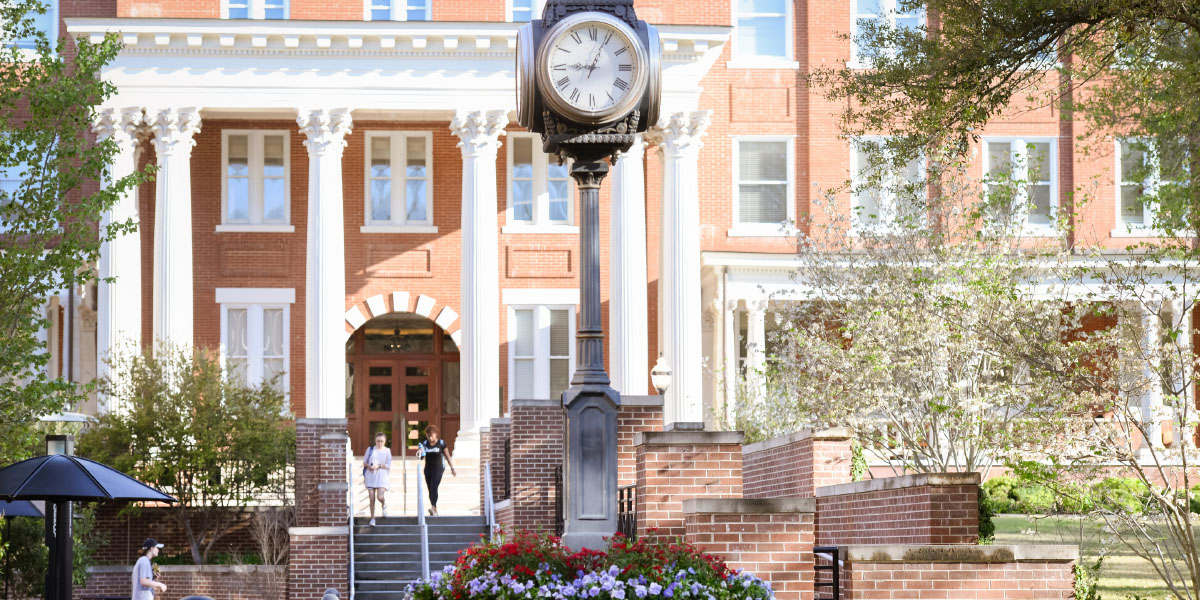Georgia College & State University (Georgia College), Milledgeville, has an intentional focus on sustainability initiatives that can lead to significant direct and indirect savings on multiple platforms. We have taken the simple measure of retrofitting lighting throughout campus facilities, going from old energy-consuming fluorescent, halogen, metal halide, and incandescent lighting, to high-quality light-emitting diode (LED) lighting.
Parking Lot as Testing Site
Georgia College’s initial lighting conversions focused on interior lighting. After verifying the extensive benefits in interior LED lighting across campus, we decided to explore exterior space conversion opportunities. To monitor the effectiveness and efficiency of exterior LED lighting through energy (measured in kilowatt-hours, or kWh) and cost savings, we selected a controlled area as a research site. We chose the college’s Irwin Street parking lot as the outdoor test site because it had utility metering and offered the reliable base data needed for comparison.
In 2014, Georgia College retrofitted the 500-space parking lot, replacing the existing metal halide lighting with quality LED lighting. (We repurposed the old lights for use in other parking lots until our inventory was depleted.) The project was funded at approximately $17,000 through the campus sustainability fee—a mandatory, $3 per-semester fee for all fee-paying students—which is administered through a comprehensive sustainability council. By converting double-head fixtures that use 1,000-watt metal halide bulbs (each having a life expectancy of 1,500 hours) to single-head LED fixtures that use 285-watt bulbs (each having a life expectancy of 50,000 hours), we anticipated energy savings of approximately $7,500 annually. With a 26- or 27-month payback, that would result in at least a 34-month warranty investment on the conversion materials.

An Increase in Visibility and Satisfaction
The conversion to LED lighting has led to a significant reduction in energy use for the parking lot—usage dropped from 94,221 kWh in FY12 (the baseline) to 20,965 kWh in FY17. The LED bulbs not only significantly lower energy usage, but also produce these benefits:
- We garnered additional cost savings totaling $3,888, through an immediate rebate from our local energy provider.
- Lower energy use reduces the demand from power plants and decreases greenhouse gas emissions. LEDs progress through their functional life much differently than their halide bulb counterparts; instead of an abrupt stop to producing light, the LED-generated light output degrades slowly over time. In Georgia College’s case, for example, the LED bulbs are expected to lose only 10 to 15 percent of illumines over their life span. In addition, LED lighting’s longer life span drastically reduces the costs involved in maintaining the lights.
- The project’s cost-saving estimates continue to hold true. In fact, in most years we have exceeded the estimated $7,500 annual savings. We spent $10,612 in FY12 to power the old fixtures, compared to $2,639 in FY17.
- LEDs are the least toxic lighting source on the market and require less frequent landfill disposals.
- The old metal halide lights had a tendency to flicker and buzz over time. This is never an issue with the exterior LED lights.
- Metal halide bulbs produce a "bright spot" directly under the fixture, with light levels decreasing dramatically as the distance from the fixture increases. LEDs mitigate this problem by distributing light more evenly.
- LEDs produce more focused illumination, meaning that fewer bulbs are needed to produce higher quality lighting. Plus, the focused light produced by LED bulbs allows for better control when illuminating outdoor areas. The LED lighting at the Irwin Street parking lot has improved visibility and systemic safety conditions; those who use the lot are better able to see parking spaces, personal vehicles, and other vehicles—as well as pedestrians. Additionally, local residents say that they appreciate the reduced glare shining into their yards and homes.
Although the upfront cost of quality LED lighting is expensive, the direct and indirect long-term savings far outweigh the use of traditional lighting and the initial additional costs are quickly recouped.
Broad Benefits
At Georgia College, the parking lot project has led to environmental, economic, and social benefits by:
- Reducing energy costs.
- Decreasing power usage.
- Lowering greenhouse gas emissions.
- Reducing landfill disposals.
- Lessening toxins in the environment.
- Advancing the campus goal of carbon neutrality.
- Decreasing maintenance costs for the lot.
- Improving the overall lighting performance for our parking lot patrons.
These institutional outcomes and global benefits emphatically solidify the importance of replacing all of Georgia College’s older, inferior exterior lighting with high-quality LED exterior lighting. Since completing the Irvin Street test, plans have moved forward to phase in LED lighting in other campus parking areas.
SUBMITTED BY Susan C. Allen, vice president for finance and administration, Georgia College & State University, Milledgeville.

